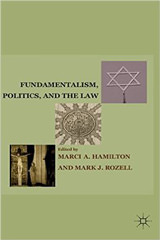Following the damning August 2018 clergy sex abuse grand jury report out of Pennsylvania, Pope Francis has summoned the Catholic bishops February 21–24, 2019, to Rome to discuss the clergy sex abuse crisis. When the announcement came, I felt a wave of déjà vu wash over me. Sixteen years ago, the American bishops planned a similar meeting in Dallas in 2002 to respond to the revelations in the Boston Globe’s searing report on the cover up of sex abuse in the Boston Archdiocese. I remembered writing a column at the time making suggestions for the bishops to help them find their way out of the crisis, and I proceeded to look it up. Yes, indeed, I had made a number of recommendations to turn the ship of church around as it ran aground. I decided to update the column based on improvements in the meantime.
Let’s just say that the checklist offered in 2002 is as relevant today as it was then. Why? Because the Church has not become the protector of children. Hence, I reprint that 2002 column here in its entirety.
An Action Plan for the Catholic Church: Making Children—Not The Church—the Focus For The June Meeting Of Bishops
May 23, 2002
The Catholic Church’s child abuse scandal now appears to threaten its very existence—potentially both driving the Church towards bankruptcy, and disillusioning some parishioners so profoundly that they may find other places and ways to worship.
The scandal has arisen because of the Church’s contempt for law enforcement, its willingness to exercise its enormous political clout in the interest of its institutional interests, and because it is easy to keep children who are fearful of authority figures quiet. These are harsh judgments, but unfortunately, they are also accurate ones.
In June, the bishops will meet in Dallas to discuss how the United States Church will deal with the crisis. The debate in the press has repeated the empty slogan of “zero-tolerance,” without many specifics as to how this goal can be achieved. More specific solutions that have been proposed to reform the Church have included reconsidering priests’ celibacy, permitting women to become priests, and allowing some lay involvement in church affairs.
These issues are all worthy of the Church’s attention, at some future time. But for the moment, they are all red herrings. The only questions that matter right now are what the Church will do to help the victims, and what it will do to prevent other children from being victimized in the future.
The Church needs to turn its priorities upside down to get it right: children above institution. So how does the Church make a 180-degree turn and prove it has the interests of children at heart?
There are a number of concrete steps, I propose, that the church needs to take immediately. The theme of all of these steps is steering the Church’s focus away from itself, and toward the interests of the suffering victims.
Here is a suggested checklist for the bishops, as they craft a plan to be unveiled in Dallas in June:
First, the Church needs not only to tolerate, but actually to welcome, the involvement of law enforcement. Had the Church followed this policy earlier, the scandal could have been averted entirely. Instead, it hid evidence and pressured prosecutors not to investigate individual claims of abuse. Only with the involvement of law enforcement can the Church be sure to avert future, similar abuse scandals.
The Church is ill-equipped to handle criminal behavior and to track defrocked priests who have abused children. Given this institutional reality, it is all the more tragic that the Church did not ask for law enforcement’s help with abuse allegations long ago.
Make no mistake about it, at the heart of this sorry chapter in our history is a Church’s contempt for the crux of the United States’ constitutional experiment: respect for the rule of law. It was simple: The Church knew of claimed crimes; it should have gone to the police and cooperated with them, as every good citizen (and institution) knows to do.
At a minimum, the bishops’ plan needs to require nationwide reporting of every known priest who has been accused of child abuse, and needs to mandate such reporting in the future. Some Cardinals, like Cardinals Law and Egan, have already taken this step, though only belatedly, and as a defensive matter. Cardinal Bevilacqua of Philadelphia made the mistake of refusing, and now rightly faces a grand jury investigation of clergy child abuse in Philadelphia and its surrounding counties. The Vatican is now making noises that there should be no reporting, a path that would be disastrous for the Church in the American culture. The Church will never be able to avoid simultaneous grand jury investigations in other cities unless it moots the need for their existence by revealing past abuse claims.
The bishops need to make reporting of all past child abuse claims, including reporting of the name of the priest accused (but not, for privacy reasons, the name of the accuser), a nondiscretionary requirement for all dioceses. Moreover, it should be a requirement with teeth: internal sanctions, within the Church itself, for bishops and cardinals who cover up sexual abuse.
Show That the Church Will Lobby for Children’s Interests, Not Against Them
Second, the Church needs to prove its capacity to be on the children’s side through its actions in the political sphere. Sadly, it has been very much on the other side in its lobbying activities in the past.
In the past, the Church has lobbied for an exemption for clergy to general reporting laws for child caretakers who see evidence of abuse—a policy I have criticized in an earlier column. Now, the Church should lobby for any such exemptions, in any state, to be demolished (whether they apply to clergy or any other professionals).
Moreover, the Church should also, more generally, lobby publicly for child abuse victims’ interests. That means, for example, that the Church should publicly endorse a no-statute-of-limitations rule for child abuse. This type of action—which could expose the Church to liability, but is the right thing to do—is what is needed to convince the public, now highly skeptical, of the Church’s good intentions.
Third, the bishops need to take back their Christian mission from the lawyers and the insurers. Although legal and insurance developments have offered the church advantages, they have come at too high a price. The Church needs to turn inward now, not to enlist professionals to extract every fiscal and legal advantage possible. Credibility and sincerity—not strategy and litigation—are what is needed from the Church now.
Church/state lawyers have been pushing hard to get the law off of the backs of churches for decades now—to the churches’ detriment. Perhaps most prominently, they successfully pushed for the enactment of a misguided federal statute, the Religious Freedom Restoration Act, which gave religious entities a leg up against every law—including abuse and reporting laws.
These lawyers have also urged courts to recognize and expand the “church autonomy” doctrine—a so-called right of a church to be “let alone” by the law. Finally, they have repeatedly put forward the notion that the baseline between religion and the law is one where religion isn’t “burdened” by the law—as though religion were a hothouse flower, removed from society and its requirements.
In this culture of no responsibility to the public good, churches have paid too much attention to using lawyers to protect their assets and power, and been too little attuned to their own mission in the world. When lawyers offer them tantalizing possibilities to avoid heavy moral and religious responsibilities to the public, churches need to balk, not acquiesce.
These isolationist legal theories open churches up to the very type of scandal the Catholic Church is enduring today—the less oversight law enforcement exercises, and the more autonomy churches have, the more likely problems will arise. Moreover, these legal theories weaken churches’ connection to what is right and what is good, instead directing attention to what is most legally and financially advantageous.
U.S. Churches need to remember, above all, their obligation to contribute to the public good, a principle built into the constitutional scheme. For too many years, they have spent far too much time on lobbying and laws dedicated, instead, to their own narcissistic self-perpetuation.
Institute Children’s Education Programs to Help Kids Avoid and Report Abuse
Fourth, the bishops should follow the lead of the Boy Scouts, who had their own similar problems with abuse. Like the Boy Scouts, the Church should teach those children who are altar servers, who take Christian education classes, and who attend parochial schools—and especially, those who are among the vulnerable, troubled youth ministered to by priests who may be the only quasi-parental figures in their lives—that there is proper and there is improper contact by adults.
The Church needs to send a strong message to children to report what makes them uncomfortable to their parents, and to an accessible official—who in turn will be required to report child abuse to the authorities. Towards this end, the Church should set up national, highly publicized help-lines, both phone and online, to aid those suffering from abuse in reporting it and getting help.
Fifth and finally, to prove their concern about children, the bishops need to stop talking at such length about the Church and start talking about the children its clergy members have harmed. Currently, the Church’s focus has dwelt on the former, at the expense of the latter. That needs to change.
On May 5, the New York Times ran an advertisement by the Knights of Columbus that illustrates the problem. Of the 65 words in the ad, 57 were devoted to reassuring the priesthood that the Knights stood behind them. Only 8 words were devoted to the victims. It is far too early to be comforting the priesthood, and it is fast becoming too late to comfort the victims with any degree of believable sincerity.
To be sure, this list of five requirements may be difficult to fulfill. Living up to it will require the Church to make sacrifices—forswearing profitable legal and lobbying positions, and devoting resources to helping victims.
Nevertheless, fulfilling these requirements is the only sure path out of this scandalous breach of duty to this nation’s children. Rather than staying on the defensive—to try to combat every allegation, no matter how plausible and convincing, and keep the church legally insulated as much as possible—the church needs be proactive, convincing the public that it cares about what has happened to the children harmed.
After—and only after—the Church has fixed what’s broken for the children through action and not just words, there will be plenty of time to consider the role of celibacy, the possibility of lay involvement, and allowing women into the priesthood. Until the children are safe, the priests’ needs—and, frankly, the Church’s needs—must take a back seat.
If the bishops take all these steps, perhaps they will prove to parents that they can make the Church not only safe for children, but more than this, an advocate for children. If that happens, I’ll consider letting my son be an altar boy, as he requested in mass on Sunday. If not, I will take my children to where they are safer—an obligation of every loving parent.









